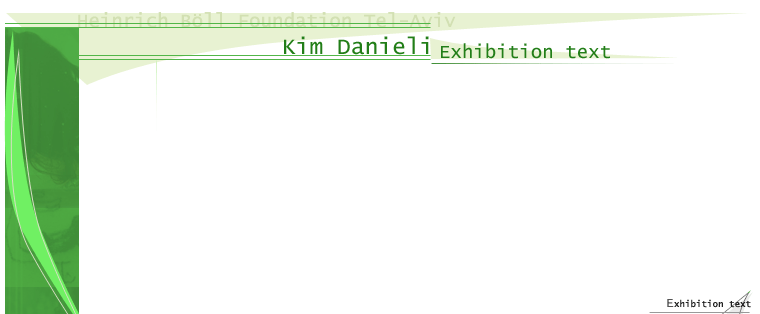


Tal Ben Zvi
Kim Daniely photographs her daughter in one of the first baths of her young life. The camera documents the lower part of the baby's body, lying heavily on the bottom of the transparent plastic bath. The baby's body is awash with light, it projects physicality, worldliness, primacy. In the photograph we cannot see the source of the water, nor can we understand the circumstances of the photographed event. The body is wrapped up in fluids, almost as it was in the womb. It is in an autonomous, inner, protected space. The child's vulva is photographed in close-up at the front of the frame, the direct viewpoint of the gynecologist/midwife towards the vulva marks the viewpoint of the one who can never look directly at her own organs. The viewpoint of a "woman after birth", she marks her child as destined to give birth.
Kim Daniely naked, in the sixth month of pregnancy, photographed in the family swimming pool below the face of the water. In the swimming pool photographs she presents her body: naked, feminine, full, lying on the bottom of the pool, carrying the child who is about to be born. She testifies to her pregnancy: "A nine-months hotel, a vessel, a body providing services, food and drink, cleanliness, a tool that eventually enables the child go out into the world." The mother and the daughter are one entity.
Kim Daniely marks a boundary-less symbiotic system. It is a feminine system expressing a subjective experience in which the mother impresses her daughter with the mark of pregnancy and birth, in which the "Self" and the "Other" are intertwined, in which the body goes through metamorphoses and the identity is multiple and exceeds its boundaries. It is a dynamic system of identity, comprised of a multitude of identities that are contradicting and changing, with the boundaries between the "Self" and the "Other" are unclear and unfixed.
She photographs her baby daughter feeling that her daughter is a direct, natural continuation of her own naked body. The documentation of the body in her previous works continues naturally to the documentation of the pregnant body, and to the documentation of the baby's daughter in her bath. The body of her daughter is a primal place for her: a pre-sexual body, pre-cognition, pre-consciousness of danger. A place of quiet. "Like an angel", she says.
In the swimming-pool photographs, the line of the water cannot be seen. Kim is photographed from the viewpoint of the bottom of the pool, and it seems as if the water enveloping her is endless. Only the geometrical lines of the pool or the stairs of the swimming-pool hint at a border, at a familiar and depthless domestic place of occurrence.
In the present photograph series, she once again chooses a domestic location: a protected family swimming pool in her parents' yard. In one of the photographs she appears to be drowning. The sense of drowning-diving is a dual "place" of control and lack of control. But while her hands are flapping in the water and her face is distorted with fear, a white circle can be seen on the face of the photograph. This circle appears again in the photograph in which she is floating on the bottom of the pool. There, it appears between her legs. This is not a photograph processing but an inner light, misleading and strange. The photographic paper reveals a mystical moment for her, a guardian angle, guiding and protecting her. She portrays a sensual, mystical world, full of fears and dangers, but at the same time protected and intimate.
In a series of text on photographic paper, Daniely expresses a sense of detachment from the concrete reality and an entrance into a mystical, imaginary world. The story "The Pool of Tears" from "Alice in Wonderland" by Louis Carroll serves as her raw material. She scans it into the computer in the format of a child's book. By erasing words and moving words, she finds her own text in it. The texts are like a photograph. Part of a frozen reality. The raw text is taken as a fact, as a reality that has to be deciphered. She directs the text like a photographer directing a scene, creating a new story. But the remaining text contains gaps, lack of continuity and destruction. She writes: "My punishment will be drowning in my own tears." The pool of tears is a place of self loss, but at the same time it is a place of self-creation stemming from the body itself.
 |
|
|||
|
|
|
|
||
|
|
|
 |
|
|
|
|
|
|||
|
|
 |
|
||